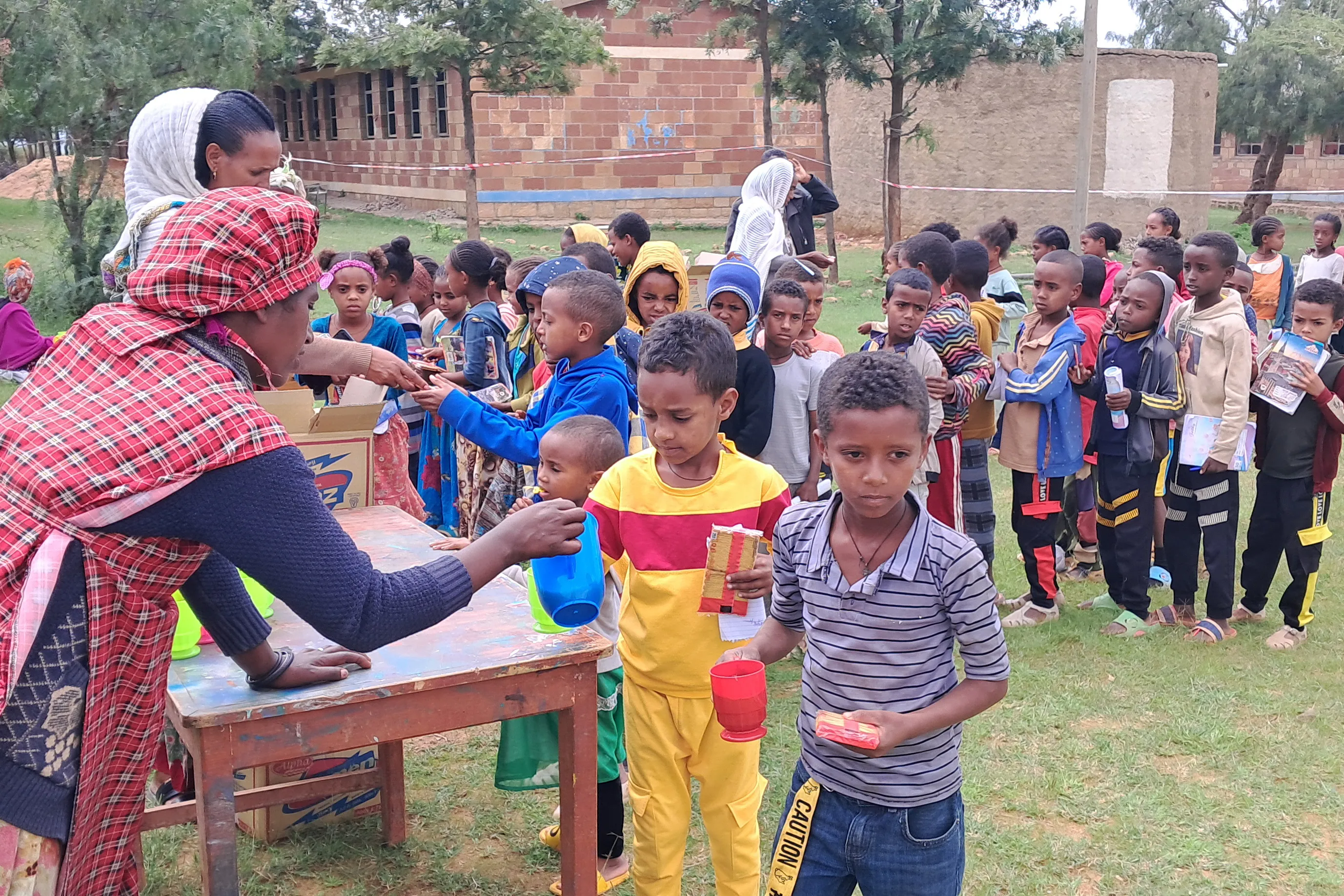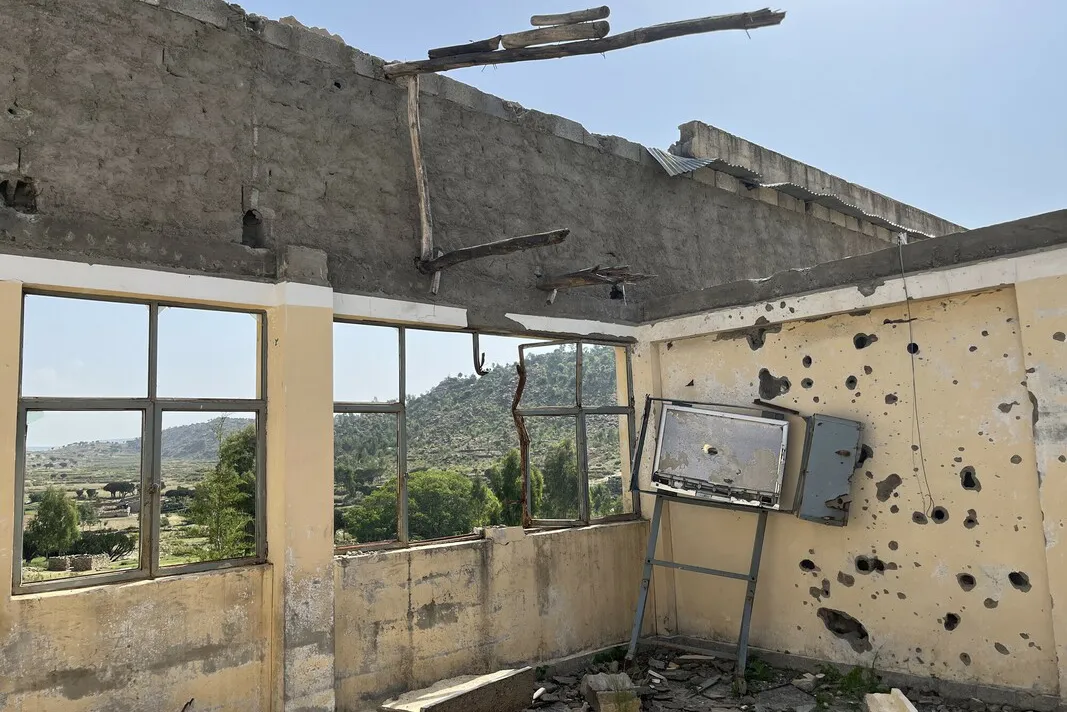
Mobile, Ala., Oct 31, 2021 / 08:00 am (CNA).
The end of October and the first few days of November comprise of “Allhallowtide” in the Church–All Hallows Eve, All Saints Day, and All Souls Day. During the month of November, the Church takes special notice to remember, honor and pray for the dead. There are many different cultural traditions around this period, but one of the most consistently honored is the practice of visiting cemeteries.
Some dioceses mark this tradition in an especially solemn way, by celebrating a Mass on All Souls Day in a cemetery. The Church has a special Mass setting for this expressed purpose, which is called the “Order of Visiting a Cemetery.” Fr. Stephen Vrazel, the pastor at St. Mary Catholic School in Mobile, Alabama, has celebrated Mass in a cemetery for the past several years, since he was ordained a priest in 2011.
Vrazel told CNA that it is a tradition at the North American College seminary in Rome, where he was a student, to celebrate Mass each year in the college’s mausoleum, the resting place of American priests and seminarians who died while in Rome and were unable to be brought back to the United States.
Vrazel said he was “incredibly moved” by these Masses, and when he became a priest his bishop asked him to preach the homily at an All Souls Day Mass held at Catholic Cemetery in Mobile. He said that even though he grew up in Mobile, he did not know that the bishop had a tradition of celebrating Mass at a cemetery.
These cemetery Masses “were formative experiences for me,” Vrazel told CNA. The Masses “impressed upon me the value of offering the sacrifice of the Mass – not only for the faithfully departed, but in close proximity to the bodies of the deceased.”
When Vrazel was moved to his current parish, he asked if he could celebrate Mass in the Catholic section of a nearby cemetery, and was granted permission by both the vicar general and the administrators of the cemetery. Since then, Vrazel has celebrated at least one Mass at a cemetery on All Souls Day.
“Because a priest is permitted to celebrate Mass three times on All Souls, for a few years I also celebrated Mass at another cemetery,” said Vrazel. “That Mass has since been taken over by another parish.”
The logistics of a Mass at a cemetery are slightly more complicated than for a normal Sunday.
Vrazel said that his parish’s liturgy committee worked to set up a temporary altar in the cemetery’s Catholic section, which also has a large crucifix. A parishioner volunteered his services as a bagpiper to provide music, and vials of holy water are distributed to those in attendance for sprinkling on graves. As part of the Order of Visiting a Cemetery, graves are sprinkled with holy water during the Mass.
While the idea of going to Mass in a cemetery may seem possibly off-putting, Vrazel said, there is much interest in the event each year, especially among the recently bereaved. He told CNA that about 100 people usually attend the All Souls Day Mass.
The practice of praying for the dead is not found in most Protestant traditions, but is a central part of the Catholic faith and justified by the book 2 Maccabees, Vrazel explained.
“Scripture makes clear that it is a laudable practice to pray for the dead. While most of our protestant brothers and sisters consider 2 Maccabees an apocryphal work, we recognize the sacrifices offered for the dead in 2 Mac 12 as normative,” he said.
“Disagreements over the appropriateness of praying for the dead are rooted in wider disagreements about the nature of sin, forgiveness, mercy, and the very existence of purgatory,” said Vrazel. He suggested that this particular discussion should be a starting point for any ecumenical dialogue regarding praying for the dead.
Even though cemeteries may make some people uncomfortable, Vrazel told CNA that he thinks that it is vitally important for Catholics to make regular visits to them.
“Walking through a cemetery you see grave after grave of somebody who mattered to someone. And while they might not have anyone today who remembers them, they still matter to God, and they should matter to us,” he said.
“People should honor the remains of their deceased loved ones, and strangers too. The soul is gone, and the body returns to dust, but that body is still the creation of God. We believe that our bodies will rise on the last day.”
Instead of a “horror-inducing space,” Vrazel said he thinks a cemetery should be characterized as more of a waiting room or resting ground for the eventual Second Coming of Christ and the resurrection of the body.
“Besides, most cemeteries close at sunset, so you don’t really have the option to visit during ‘spooky’ nighttime hours anyway,” he added.
This article was originally published on CNA October 31, 2019.
If you value the news and views Catholic World Report provides, please consider donating to support our efforts. Your contribution will help us continue to make CWR available to all readers worldwide for free, without a subscription. Thank you for your generosity!
Click here for more information on donating to CWR. Click here to sign up for our newsletter.











Leave a Reply